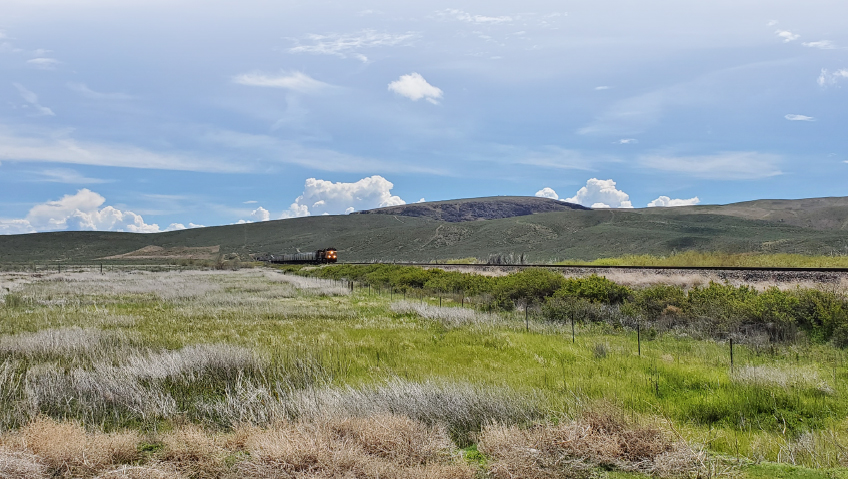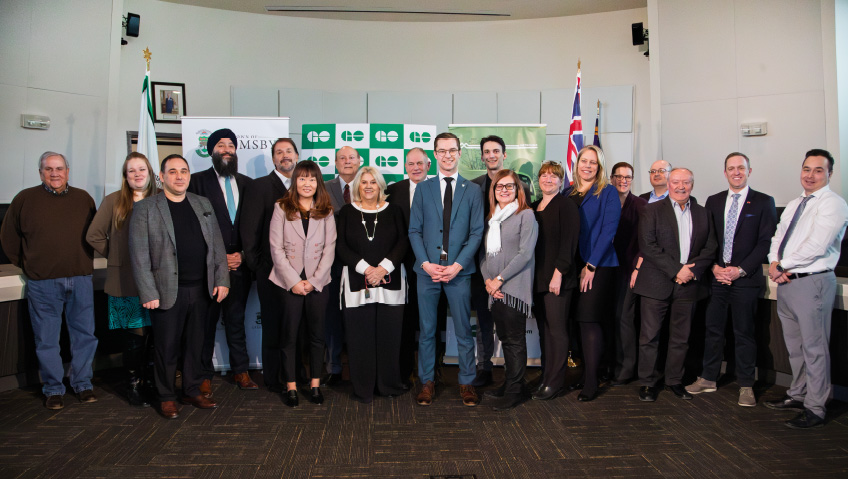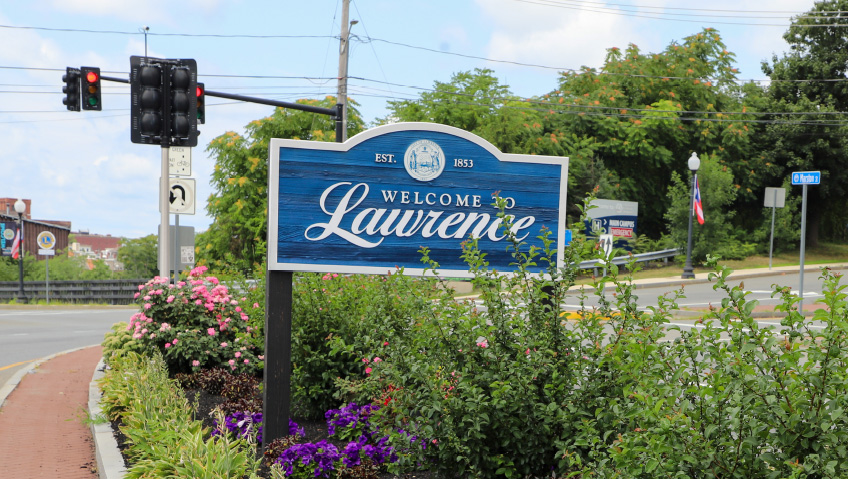To be successful in business takes vision, drive and of course, the right location.
Known as a major hub for mining and mine-related industries—and the fourth-largest gold-producing area on the planet—Northeastern Nevada is fast gaining popularity with manufacturers, warehousing and logistics, and many other sectors because of its prime location.
“One of the biggest things we promote is that from a logistics standpoint, our region is dead center in the middle of the Western United States,” says Sheldon Mudd of the Northeastern Nevada Regional Development Authority (NNRDA). “If a truck is driving 60 miles an hour for 10 hours, it can be in every major metropolitan statistical area (MSA) in the United States west of the Rockies,” he says.
“To us, our positioning seems like a very lucrative asset. We’re centrally located in the western U.S., and from here you have access to 20 to 30 million customers within a day.”
Entering his sixth year as executive director of the NNRDA, Mudd has served as a Staff Sergeant in the United States Air Force, worked as a geoscience database administrator, and spent time as a mining industry specialist, possibly the ideal kind of background for someone who leads the development authority.
Stepping stone to success
The State of Nevada is bordered by Oregon, Idaho, Utah, Arizona, and California, making it perfect for many industries across the United States.
Founded over a decade ago, the NNRDA represents the interests of four counties: Lander, Eureka, Elko (Carlin, Elko, Wells, and West Wendover), and White Pine County (Ely). Both Elko and White Pine’s incorporated cities contribute to the organization.
The mission of the NNRDA remains to encourage and coordinate “the continual, diversified development and economic growth of the Northeastern Nevada region and all its entities,” according to the official website.
Representing 36 percent of the State of Nevada, the enormous footprint of the NNRDA—35,799 square miles to be exact—presents its share of challenges and opportunities. The area is long exempt from certain corporate taxes (under $4 million annual revenue) and many others, making it attractive to businesses. But while the population for the entire region of 80,000, which averages to two people per square mile, is attractive to some, it has its downside.
“We like the idea of big facilities, but there’s not necessarily a huge workforce to support that; to have such facilities we’ll have to rely heavily on automation and things like that,” says Mudd. But while unemployment is extremely low, the area simply doesn’t have enough people to supply companies requiring 500 or more employees.
Bring on the houses
For instance, Northeastern Nevada, like many other communities across America, struggles to keep up with housing and new construction. Working with the State of Nevada, Mudd is aiming for reciprocating licensing so builders can come into the area from neighboring Idaho and Utah to create more housing.
“I think if we had housing stock available we could easily recruit workers from southern Idaho, which is growing exponentially because a lot of Californians are moving into that area, and housing prices are going up,” says Mudd, who hails from Idaho and has himself seen many leave the state because of growing unaffordability.
Creating additional residential property in Nevada would see the NNRDA start a recruiting campaign to bring more people to the area.
Within its existing industries, Northeastern Nevada has many secure, well-paying jobs. Nevada Gold Mines, a joint venture between Barrick and Newmont, is one of the biggest companies and has hundreds of vacancies in their workforce. Additionally, the Ely State Prison near White Pine County is short of staff. Part of the issue is lack of housing near the facility, which is located some nine miles north of Ely.
“It all goes back to housing,” comments Mudd. “If we could put up a thousand houses in my region in the next year—which will never happen, but if it could—then we could start recruiting from outside areas, and would have better opportunities. But as it is, the workforce is a big challenge. I think if we had housing stock here—because we’ve already got the jobs—we could easily recruit from nearby states.”
Working with businesses
A great location, local and state incentives, minimal regulation, affordable land, multiple industrial properties, and support from the NNRDA are just a few reasons companies are seeking out Northeastern Nevada.
“We have more companies on the hook now than we’ve ever had before,” says Mudd, who is in talks with a steel-building manufacturer, a company that does hydrolysis—separating oxygen from water to retain the hydrogen for fuel—a railway tie company, and other manufacturers, including Solmax International Inc.
Based in Varennes, Quebec, Solmax is a global leader in sustainable construction solutions and geosynthetics. It creates high-performance geomembranes for aquaculture, infrastructure, water management, oil and gas, mining, and other sectors. In 2021, the company purchased almost 22 acres at the Northeastern Nevada Regional Railport and should start building a plant this year.
Showing support
Every county, be it Lander, Eureka, Elko, or White Pine, offers something unique. This includes municipal-owned industrial parks to meet the needs of different business types.
Sometimes, communities will sign over acres of developed industrial park land, once projects are built and guarantees are in place, and reduce hookup fees. This is in sharp, welcome contrast to prices in urban areas of a million dollars and more per acre. And unlike major centers, the thresholds for qualifications are far less costly and challenging.
Capital investments for manufacturing are significantly less by millions of dollars, and rural Nevada requires 10 employees, compared to 100 or more in big cities.
Along with its easy-to-navigate and information-packed website, the Northeastern Nevada Regional Development Authority has other initiatives. These include a small business course called the READY AIM Small Business Primer. Held in various locations around the region, the Small Business Primer covers important subjects, including business plans, licensing, marketing, lending and financing, and more.
About a year ago, the NNRDA took over the reins of Launch Rural Nevada, a program begun at the state level, and amped it up. This marks the fourth annual “entrepreneurial, pitch, education, and networking” event, where small business owners can get advice, discuss accessing capital, and connect with others in a hybrid format. Mudd is excited about the upcoming November 3rd program.
“We hope to continue to enhance our local small business ecosystem, so we can see more investment dollars coming right out of Nevada, instead of necessarily having to recruit business and industry,” he says, “and create more confidence in the local small business space.”
Building a bright future
Along with interest from manufacturers, Mudd is in talks with site selectors for a major carrier handling warehousing and logistics. The company is eyeing Carlin west of Elko, which is nicely placed halfway between Salt Lake City and Reno.
“We’ve got some nibbles from those industries, and we’re hoping to see a lot more because, between logistics and aerospace and defense, those are the best potentials we have in this area,” he says.
The area continues its work with MineConnect—Ontario’s Mining Supply and Services Association—and is looking forward to a trade mission coming from Northern Ontario to Nevada in the spring to see what partnerships can be developed between local companies and underground mining equipment in Northern Ontario.
When asked about the future of his role in economic development, Mudd’s confident response is not what one might expect. “One thing I’ve always said is that my personal goal with this organization is to work it out of business. What I mean by that is, I want economic development to happen organically in this area to such a degree that we are no longer needed.”
Naturally, people ask Mudd if he’s really trying to work himself out of a job. His reply: there are plenty of businesses he can be part of. What he doesn’t like to see is economic development organizations in communities that frankly don’t need them, and serve more as a placeholder than anything else. “That’s my personal opinion, and that’s not what I want to be. We are here to do a job, and I want to do it well enough that, eventually, we’re no longer needed.”






